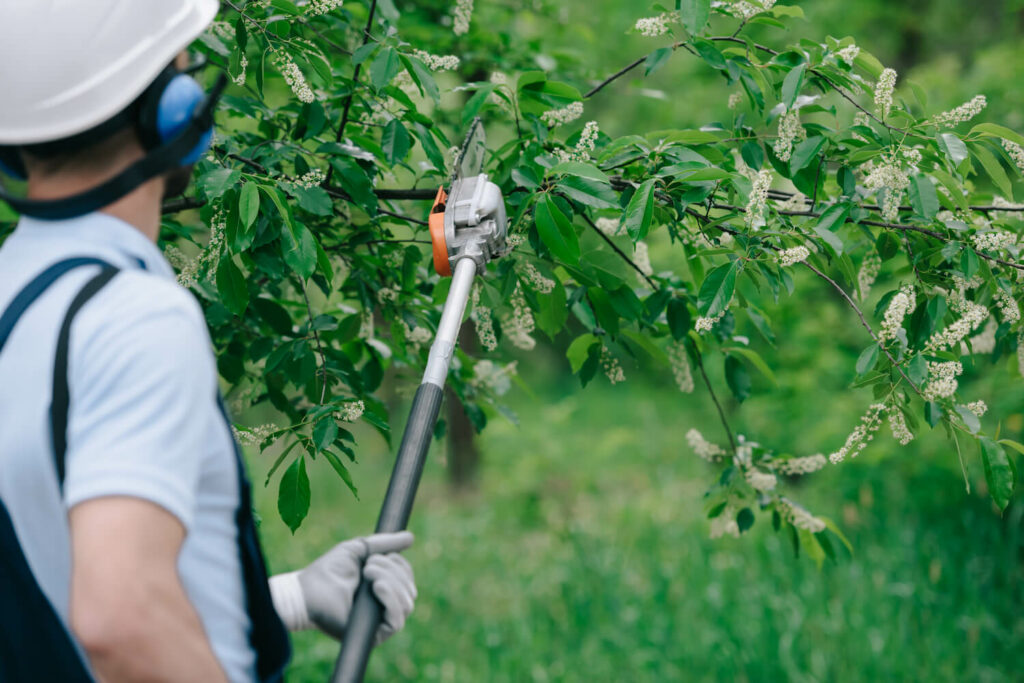
Trees are an essential part of our natural environment, providing us with oxygen, shade, and beauty. They also play a vital role in reducing air pollution and providing habitat for wildlife. However, maintaining the health and beauty of your trees requires regular care, including trimming. But when is the best time of year to schedule tree trimming services in Oregon? In this post, we’ll explore the answer to this question and provide some additional tips on keeping your trees healthy and thriving.
The Importance of Tree Trimming
Tree trimming is a critical component of tree care that involves removing dead, diseased, or broken branches, as well as shaping and maintaining the overall health of the tree. Regular trimming not only helps keep your trees looking beautiful but also promotes healthy growth by removing weak or diseased limbs and stimulating new growth. It also helps prevent safety hazards by removing branches that may be at risk of falling and causing damage.
In addition, tree trimming can help improve the overall health of your landscape by allowing more sunlight to reach the ground, promoting the growth of grass and other plants. This, in turn, can help reduce erosion and runoff, providing a healthier environment for your trees and other vegetation.
The Best Time of Year for Tree Trimming Services in Oregon
The best time of year to schedule tree trimming services in Oregon is during the dormant season, which typically falls between late fall and early spring. During this time, trees are not actively growing, and the leaves have fallen off, making it easier to see the structure of the tree and identify which branches need to be trimmed.
Trimming during the dormant season is also less stressful for the tree, as it is not using energy to grow new leaves or fruit. Additionally, trimming during this time can help prevent the spread of disease, as fungi and insects are less active during the winter months.
However, it’s important to note that not all trees have the same dormant season. Deciduous trees, such as maples and oaks, typically go dormant in the late fall and winter, while evergreen trees, such as pines and spruces, may have a more extended dormant season or may not go dormant at all. It’s essential to consult with an arborist to determine the best time to trim each specific tree on your property.
Trimming During the Growing Season
While the dormant season is the best time to trim most trees, some circumstances may require trimming during the growing season. For example, if a tree has a broken or diseased branch that poses a safety hazard, it’s essential to remove it as soon as possible, even if it’s during the summer or fall. In some cases, trimming during the growing season may also be necessary to maintain the tree’s shape or size, or to remove water sprouts or suckers.
However, trimming during the growing season can be stressful for the tree, as it’s actively growing and using energy to produce new leaves and fruit. Additionally, trimming during this time can increase the risk of disease and insect infestations, as the tree’s natural defenses are weakened. It’s essential to consult with an arborist before trimming a tree during the growing season to minimize the risk of damage.
Factors to Consider When Scheduling Tree Trimming Services
In addition to the time of year, several factors should be considered when scheduling tree trimming services. These include:
Tree Species
Different tree species have different growth rates and require different types of trimming. For example, fast-growing trees like poplars and willows may require more frequent trimming than slower-growing trees like oaks and maples.
Tree Location
Trees located near power lines, buildings, or other structures may require more frequent trimming to maintain safety and prevent damage.
Tree Health
Trees that are diseased, weakened, or under stress may require more frequent trimming to maintain their health and prevent safety hazards.
Age
Young trees may require more frequent trimming to promote healthy growth and shape, while older trees may require less frequent trimming to maintain their structure and health.
Budget and Cost
Finally, your budget should also be considered when scheduling tree-trimming services. While regular trimming is essential for the health and beauty of your trees, it can also be costly. Be sure to consult with an arborist to determine the best trimming schedule that fits your budget and meets the needs of your trees.
Conclusion
In conclusion, the best time of year to schedule tree trimming services in Oregon is during the dormant season, which typically falls between late fall and early spring. Trimming during this time promotes healthy growth, reduces the risk of disease, and allows for easier identification of which branches need to be removed. However, trimming during the growing season may be necessary in some circumstances, such as for safety hazards or to maintain the tree’s shape or size.
When scheduling tree trimming services, it’s important to consider several factors, including the tree species, location, health, age, and budget. And, it’s always best to hire a professional arborist to ensure the job is done safely and correctly.
Remember, regular tree trimming is essential for maintaining the health and beauty of your trees, and can also improve the overall health of your landscape. So, don’t neglect this important aspect of tree care, and schedule your tree trimming services today!
